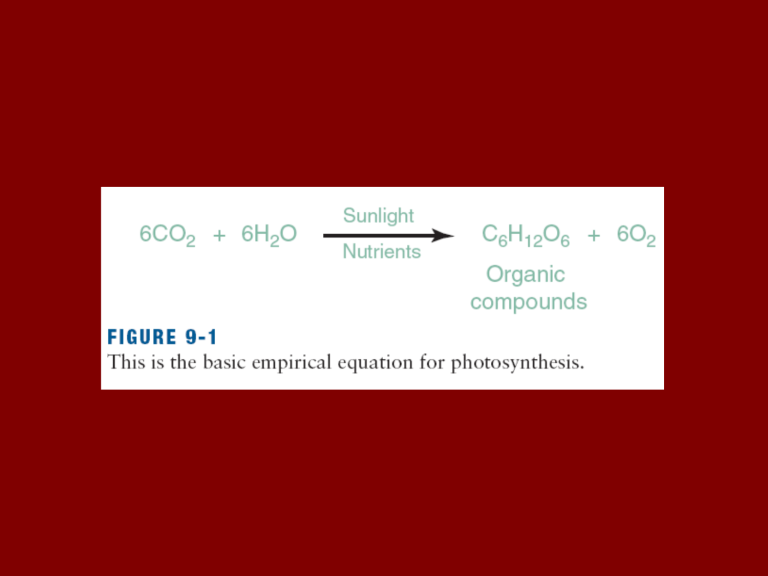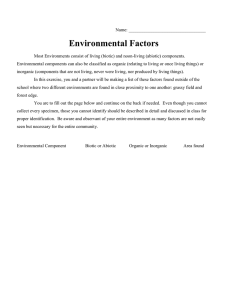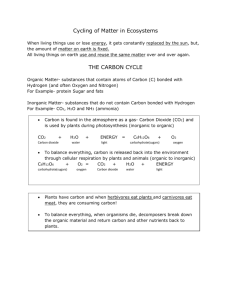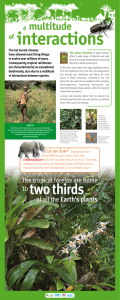Slides: Chapter 9: Carbon Flux and Climate Change in Tropical Ecosystems

PLATE 9-1
Tropical forests have the highest annual
NPPs of any terrestrial ecosystem.
FIGURE 9-3
Map of global net primary productivity. Note the concentration of NPP in equatorial regions, specifically forested areas.
FIGURE 9-6
(a) Potential natural vegetation types of South America as defined for the terrestrial ecosystem model. Each vegetation type is presumed to have unique properties with respect to carbon and nitrogen cycling processes and is presumed to interact with the environment in a unique fashion. (b)
Potential annual net primary productivity (NPP, as carbon) in South America as determined by the terrestrial ecosystem model. All vegetation is assumed to be mature and undisturbed by human land-use activities. Units are grams of carbon per square meter per year.
FIGURE 9-7
Potential net primary productivity
(NPP) in South America (as carbon) for the months of January, April, July, and October. Values are grams per square meter per month of carbon. Negative NPP values (in red) indicate that autotrophic respiration exceeded gross primary production during that month. The blockiness in these figures is due to the poor spatial resolution of the cloudiness data set used to estimate the monthly irradiance of photosynthetically active radiation.
FIGURE 9-8
Estimated monthly net primary productivity for six locations in
South America. Monthly rainfall
(•—•) is also shown for comparison.
Cartographic coordinates refer to the southwest corner of
0.5
° latitude 3 0.5° longitude grid cells.
PLATE 9-6
Cloud cover during rainy season may reduce NPP in lowland tropical forests.
FIGURE 9-9
Carbohydrate concentrations and pool sizes (mean 6SE) of dry (light brown bars) and moist (dark brown bars) tree species belonging to functional groups differing in shade tolerance (TST, total shade tolerants; PST, partial shade-tolerants; LLP, long-lived pioneers; SLP, short-lived pioneers). Bars within forest type accompanied by a different letter are significantly different (Student-Newman-Keuls test, P , 0.05). The total carbohydrate pool sizes are estimated for stems of 1-meter-tall saplings.
FIGURE 9-10
Cumulative above-ground net biomass change
(tons per hectare per year) in humid forests in
(a) the tropics since 1958; (b) the Paleotropics
(tropical Africa, Asia, Australia) since 1958; (c) the Neotropics (tropical Central and South
America) since 1967; (d) the lowland
Neotropics since 1971; and (e) Amazonia since 1975. Annual mean (solid line) and 95% confidence interval (dotted lines) values are based on the cumulative changes in individual sites since the first year and are scaled by a / b , where a 5 the cumulative time elapsed since the first year and b 5 the mean monitoring period per site up to each year end.
FIGURE 9-15
Rivers and the carbon cycle. (a) Photosynthesis in land plants fixes atmospheric CO2 (inorganic carbon) as organic carbon, which is either stored as plant biomass or in soil, or is decomposed back to CO2 through plant and soil respiration. This CO2 can return to the atmosphere or enter rivers; alternatively, it can react with soil minerals to form inorganic dissolved carbonates that remain stored in soils or are exported to rivers. (b) The transformations of organic to inorganic carbon through decomposition and photosynthesis continue in rivers; here, CO2 will re-exchange with the atmosphere (“degassing”) or be converted to dissolved carbonates. These carbonates do not exchange with the atmosphere and are mainly exported to the coastal ocean. Organic carbon is also exported to the ocean or stored in floodplains. (c) In the coastal ocean, photosynthesis, decomposition, and reexchanging of CO2 with the atmosphere still continue.
Solid organic carbon (such as soil particles and phytoplankton cells) is buried in coastal sediments, where it is stored or decomposes to inorganic carbon and diffuses back into coastal waters. Dissolved inorganic and organic carbon is also exported to the open ocean, and possible deep-ocean waters, where they are stored for many centuries.
FIGURE 9-19
Photographs of the split-stream removal experiment. (a) The plastic divider and 210meter section of Rio las Marías. (b) Visual differences in benthic particulate matter after removing P. mariae (right) compared with the intact fish assemblage (left).
FIGURE 9-24
The relationships between net primary productivity and (a) mean annual precipitation and (b) mean annual temperature. Open squares are International
Biological Program sites, open circles represent the tropical forests survey, and dark circles are sites on the Maui moisture gradient that varied in precipitation
(MAP = 5 2,000 to 5,050 millimeters) but not in temperature
(MAT = 5 16).





